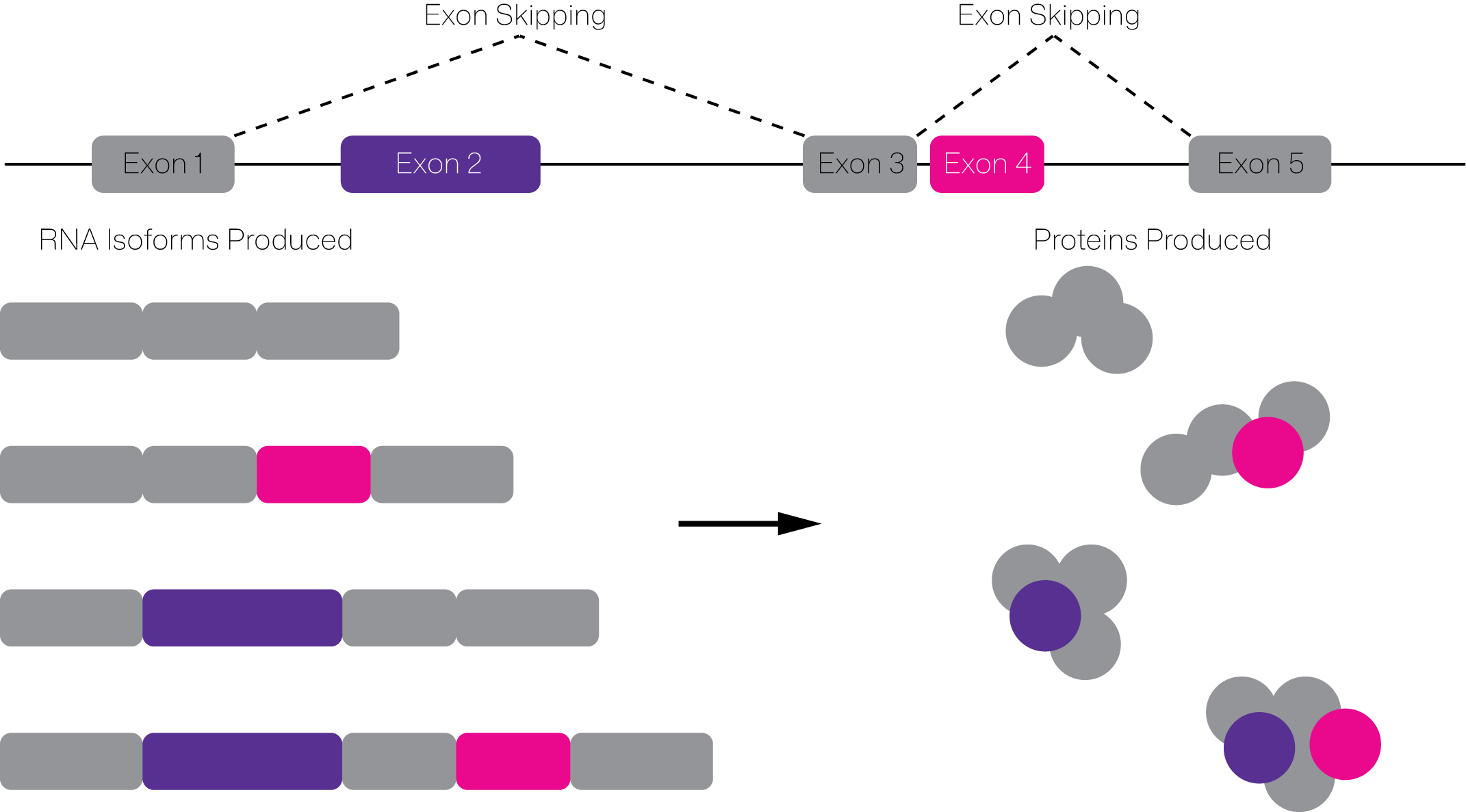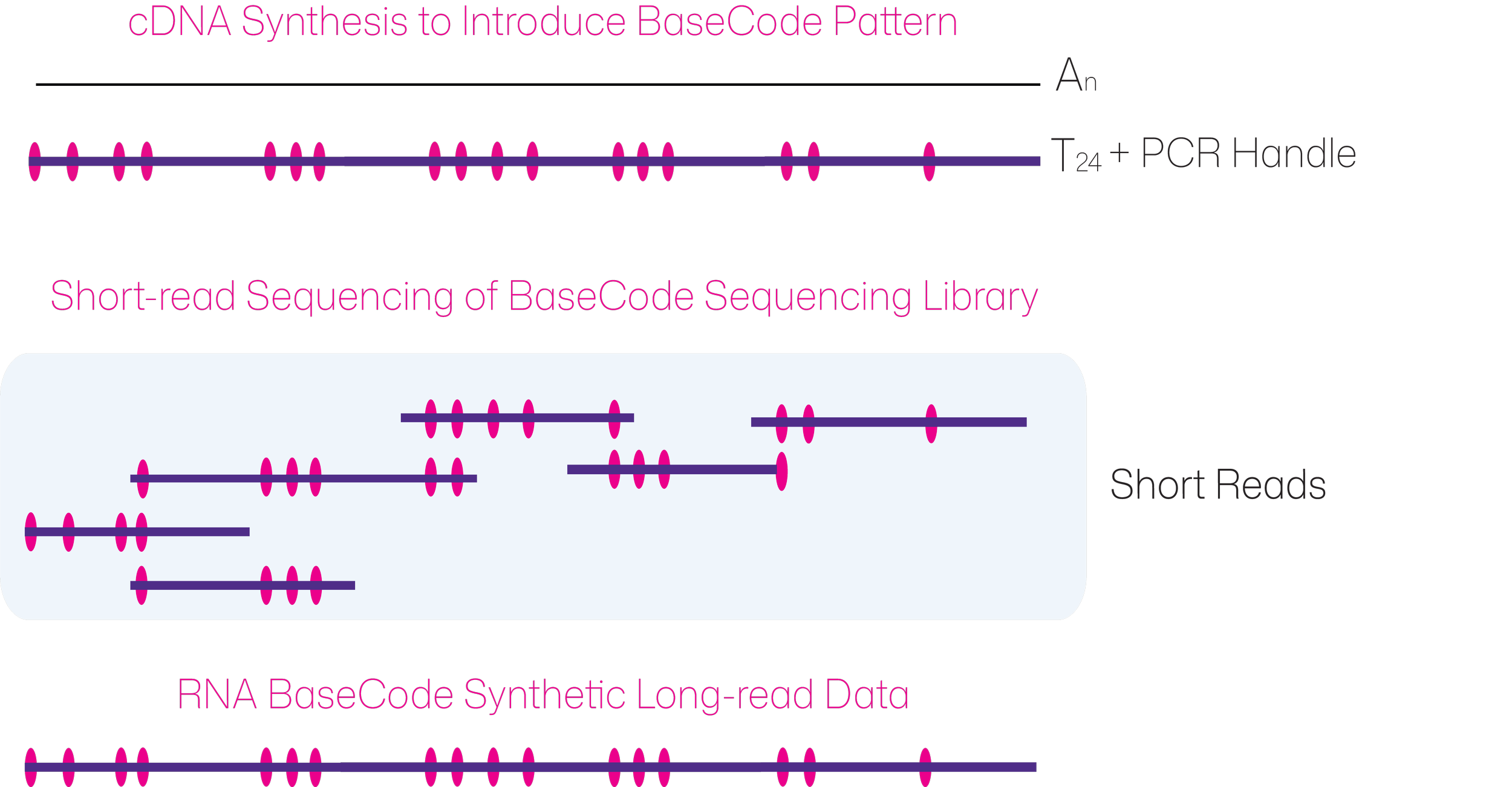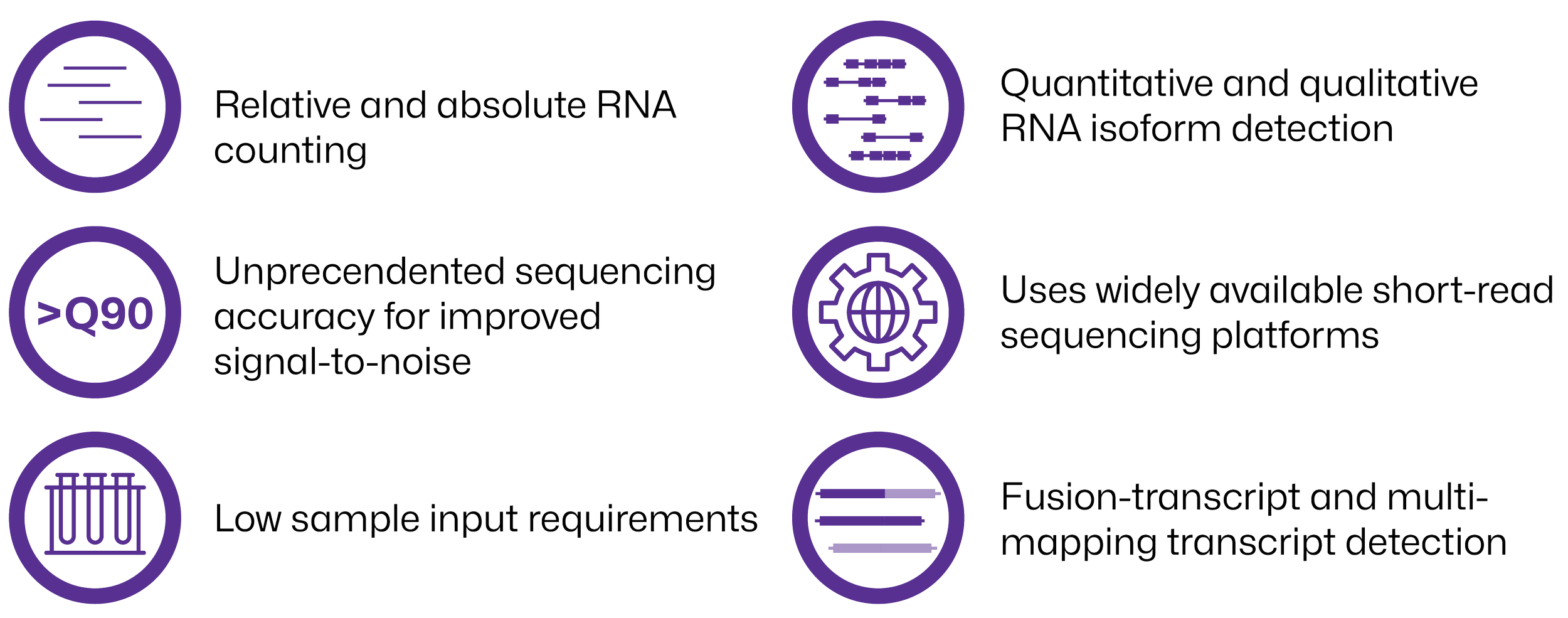RNA BaseCode Technology
Same Gene, Different Jobs
Proteins produced from the same gene can perform dramatically different functions.
Distinguishing between RNA isoforms is essential to fully understand the diverse roles that genes and their products play in both health and disease.
Short-read sequencing misses the message
Short-read sequencing is the gold standard for high-throughput gene expression analysis and offers unmatched accuracy, scalability, and availability, enabling precise quantification of gene expression across thousands of samples. While short reads may cover exon junctions, they fail to provide a complete and accurate view and distinguish RNA isoforms.
RNA BaseCode Synthetic long-reads fill in the gaps
The RNA BaseCode chemistry uniquely barcodes all short-reads that originate from the same RNA molecule. By creating a random pattern of errors during reverse-transcription, all cDNA originating from a single RNA molecule can be identified. These short reads are then combined to create synthetic long-read data of exceptional quality and accuracy.
The RNA BaseCode Library Preparation protocol is an easy-to-follow workflow that is clear, fast, and accessible and does not need any complex equipment or infrastructure.
Our proprietary library preparation chemistry is optimized to maximize full-length cDNA generation and minimize any biases towards shorter fragments that are common for other RNA sequencing library preparation methods.





